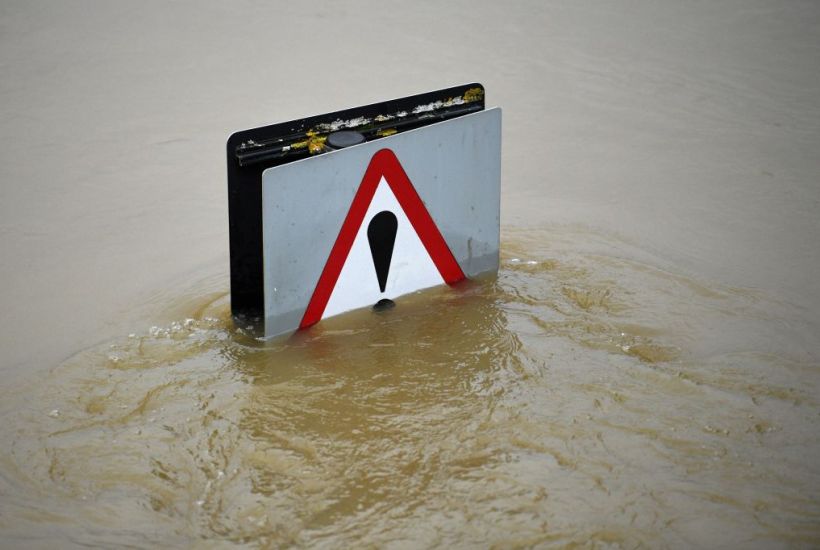‘Extreme weather will be the norm,’ says the Guardian. Britain is gaining a more ‘violent’ climate according to Sir James Bevan, chief executive of the Environment Agency. ‘The UK is already undergoing disruptive climate change with increased rainfall, sunshine and temperatures, according to scientists,’ wites the BBC’s ‘environmental analyst’ Roger Harrabin.
But how many people making these sorts of claims have actually read the Met Office’s report – the ‘State of the UK Climate 2020’ – as opposed to merely reading the press release? Not for the first time, the real data presents a very different world from the one depicted in the increasingly hysterical reporting on climate change.
Firstly, temperatures. There is a clear upward trend in temperature over the UK in the past 60 years (following a slight decline in the two decades prior to that). We can argue about heat islands – and I certainly wouldn’t trust temperature records set at Heathrow, with its concrete aprons and jets spewing out hot gases. But the overall data points unmistakably to rising temperatures. There has been a corresponding downward trend in the frequency of frosts, as might be expected. However, the data also shows that in the UK at least the predominant period of warming was the 1980s and 1990s, with a distinct levelling-off over the past decade. Claims that warming is ‘accelerating’ are not justified by data, at least not in Britain.

Now for rainfall. Much reporting this morning focuses on 2020 being the fifth wettest year since 1862, averaged over Britain. Certainly it was a wet year, but what matters more is the long-term trends. Averaged across Britain, the Met Office report notes, the decade 2011-20 was 9 per cent wetter than the period 1961-90. But there are two things to note about this. Firstly, the biggest increase in rainfall in 2011-20 compared with the 1960-1990 reference period was during the winter and summer months, with the spring becoming drier and autumn pretty unchanged.

The wetter summers are in direct contradiction to climate models. The Climate Projections published by Defra in 2009, for example, predictedthat UK summers would be between 17 per cent and 23 per cent drier by the 2080s. Indeed, as recently as the dry summer of 2018 the more general worry was about the UK suffering summer droughts. It is odd to read, then, that today’s report supposedly confirms predictions that have been made by climate scientists for decades.
Secondly, the UK-wide rainfall figure hides a wide differential in rainfall trends across the country, with greater increases in the north and west, especially in the Scottish Highlands and much less marked changes in the more populous south and east. As for extreme rainfall events, the Met Office uses three main metrics to identify trends. As I wrote herethe other day, two of them show no upward trend this century. The third – which counts the number of days on which weather stations across the UK measure more than 50 mm of rain – does show an upwards trend but the Met Office itself admits that the methodology is questionable. The number of rain gauges in operation has declined from 5,000 to 3,000 over the past 60 years, and while the data is adjusted to take account of the falling number of rain gauges it does not take account of their changing distribution. The authors of today’s report themselves note: ‘we cannot rule out the possibility that the present day network while having fewer stations overall may provide better sampling of regions that experience higher frequency of heavy rain days such as western Scotland.’
Now to the accusation that Britain facing a more ‘violent’ climate. Sir James Bevan, speaking on the Today programme this morning, didn’t elucidate what he meant by this, but the obvious interpretation is that climate change is going to mean more severe storms and high winds – a claim that is often made when Britain suffers gales. Yet the data shows a clear trend in the opposite direction, with declining numbers of occasions when the UK is exposed to winds exceeding 46 mph, 58 mph and 69 mph.

Finally, the sunshine. The year 2020 was especially sunny thanks to dominant high pressure in the spring – the summer and autumn were cloudier than average. The follows an upwards trend in the number of sunshine hours recorded in Britain, which were 8 per cent higher during the years 2011-20 compared with 1960-90. But is that really a form of ‘disruptive climate change’ in the words of Roger Harrabin? Apart from making it even more advisable to wear a sun hat, it is hard to explain why we ought to be fearing a future of sunny days (assuming the trend continues). On the contrary it will presumably make all these solar panels work better. <//>
Got something to add? Join the discussion and comment below.
Get 10 issues for just $10
Subscribe to The Spectator Australia today for the next 10 magazine issues, plus full online access, for just $10.





















Comments
Don't miss out
Join the conversation with other Spectator Australia readers. Subscribe to leave a comment.
SUBSCRIBEAlready a subscriber? Log in